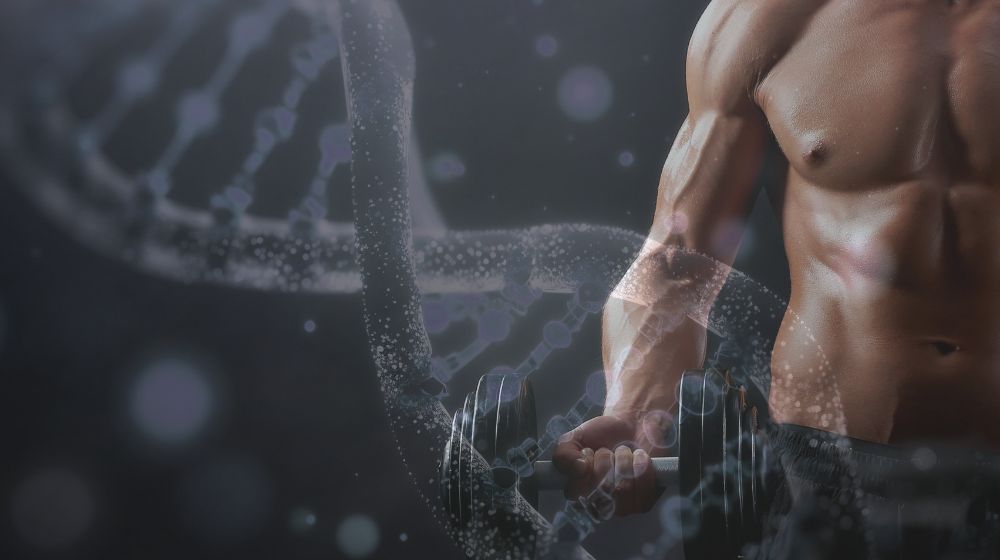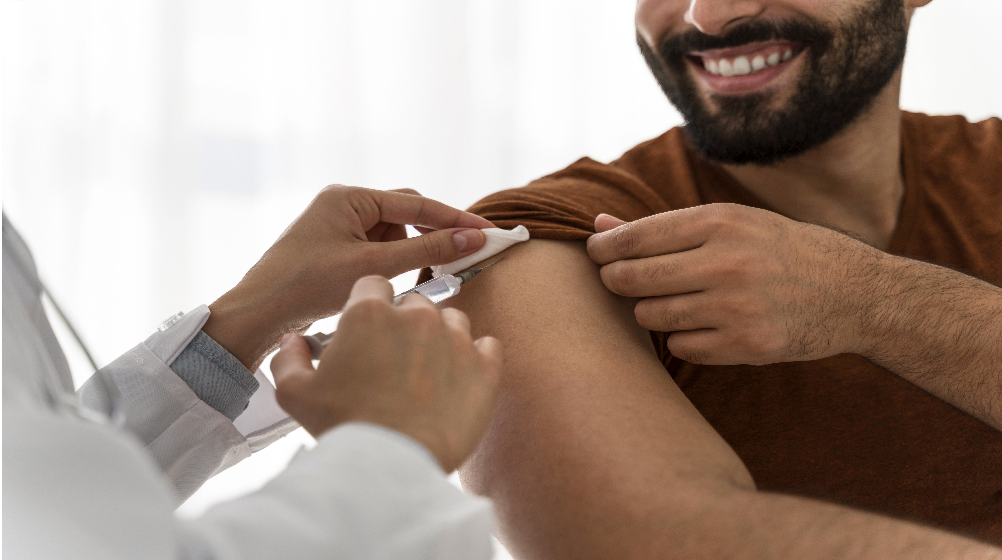Are you feeling low? Exploring Testosterone Replacement Therapy or TRT treatment and regaining your vitality.
Testosterone, the hormone often associated with masculinity, plays a crucial role in men’s physical and mental well-being. It regulates sex drive, muscle mass, energy levels and even mood.
But as men age, testosterone production naturally declines. This can lead to a constellation of symptoms that leave you feeling like a shadow of your former self.
If you are experiencing a lack of energy, low libido or unexplained muscle weakness, you might be wondering: “Do I need testosterone replacement therapy or TRT treatment?”
Don’t worry! Today, this blog delves deep into the signs of low testosterone and explores how to navigate TRT treatment.
What is Low Testosterone Level?
Low testosterone, or hypogonadism, is a condition where the testosterone levels in the body fall below the normal range. Testosterone is a crucial hormone responsible for developing male physical characteristics and maintaining several bodily functions.
When testosterone levels drop significantly, it can lead to a range of symptoms, including fatigue, reduced libido, muscle weakness, and mood changes. According to the American Urology Association (AUA), the low testosterone level is identified by less than 300 ng/dL.
Low testosterone can occur due to various factors, including aging, medical conditions such as diabetes or obesity, and certain medications. Diagnosing low testosterone typically involves measuring blood testosterone levels, often through a morning blood test when levels are highest.
If diagnosed, treatment options like testosterone replacement therapy or TRT treatment can help alleviate symptoms and restore hormone levels to normal.
What are the Signs and Symptoms of Low Testosterone?
There are several specific signs and symptoms closely related to the low testosterone level in men. Here we mention some of most specific symptoms of testosterone deficiency:
-
Fatigue -
Depression and anxiety -
Reduced sex drive -
Erectile DysfunctionList Item -
Loss of body hair and lean muscle mass -
Obesity or overweight -
Less beard growth -
Low sperm count -
List Item -
Shrinking testicles -
Decrease in endurance
How to Identify Your Low Testosterone Level?
If your healthcare provider suspects low testosterone levels, they will likely start with a blood test, typically taken in the morning. Since testosterone levels fluctuate throughout the day, multiple blood samples at different times may be needed for an accurate assessment. Your doctor might also order additional tests to investigate other potential causes for your low testosterone levels.
Daily Testosterone Variation
Testosterone levels vary throughout the day, peaking around 8 a.m. and dropping to their lowest around 9 p.m. In older men, it’s particularly important to measure levels in the morning to detect any significant declines.
Blood Tests for Testosterone Levels
A nurse or technician will draw blood from a vein in your arm and send it to a lab for analysis. There are three main types of blood tests for measuring testosterone:
-
Total Testosterone Test: This measures both bound and free testosterone. Most testosterone is bound to proteins, which regulates the amount of active hormone available to tissues. -
Free Testosterone Test: This specifically measures the amount of free, unbound testosterone in the blood, used to diagnose certain medical conditions. -
Bioavailable Testosterone Test: This measures both free testosterone and testosterone bound to albumin, a blood protein. Though less common, this test can help diagnose specific medical issues.
Considering your specific lowT signs, symptoms and blood test results, your physician can suggest you to go for Testosterone Replacement Therapy or TRT treatment to alleviate the issue.
What is Testosterone Replacement Therapy or TRT Treatment?
TRT treatment is used to treat low-T level in men. Individuals with low testosterone levels can take prescription testosterone to restore back the hormone level in blood.
According to the 2019 research report, TRT can help people to improve their sexual function along with maintaining bone density, improving cognitive function and attention span.
Different Types of Testosterone Replacement Treatment
There are several forms of TRT administration, some of them need daily administration while others may be on a monthly basis.
Testosterone Injection:
Injectable testosterone is a cost-effective and frequently used form of testosterone replacement therapy (TRT) treatment. It can be administered as a short-acting treatment, requiring injections every 1 or 2 weeks, or as a long-acting treatment, with the second injection given 4 weeks after the first and subsequent injections spaced 10 weeks apart. The specific dosage and frequency depend on the individual.
Short-acting testosterone is injected either subcutaneously or into the muscle, while long-acting injections are typically administered into the gluteal muscles.
TRT may lead to variations in testosterone levels, which can impact energy, libido, mood, and cause symptoms like breast tenderness.
Topical (Transdermal) Testosterone:
Topical testosterone, in the form of gels and creams, is applied daily, allowing for gradual absorption and more consistent blood testosterone levels.
Users of topical treatments should avoid skin-to-skin contact with others for at least 6 hours post-application to prevent transferring the medication, which could be harmful to pregnant individuals and children.
Topical patches adhere to the skin for 24 hours and come in doses ranging from 2 mg to 5 mg. They can cause skin irritation and may not be visually appealing, but they tend to be less harmful to the liver compared to oral medications.
Topical gels are usually prescribed in daily doses of 40–100 mg, varying by product. It’s advisable to start with the lowest dose and adjust as needed.
Buccal Patches:
Buccal patches are placed above the upper teeth and release testosterone over 12 hours. Typically, these patches contain 30 mg of testosterone and are applied twice daily, about 12 hours apart. They may cause headaches and irritation in the gums and mouth.
Testosterone Implants or Pellets:
Testosterone pellets are small implants inserted under the skin in the upper hip or buttock. They dissolve gradually, providing TRT for 3–6 months. Dosage varies by individual, so consultation with a doctor is necessary before implantation.
The insertion of these implants is a minor surgical procedure performed under local anesthesia, involving a small incision in the fatty tissue.
Oral Testosterone:
Oral testosterone is less common, more expensive, and can pose risks such as liver damage with long-term use. It may also lead to hypertension and stroke, which limits its use to individuals who cannot use other forms of TRT.
Oral testosterone tablets are typically prescribed in doses of 225–396 mg, to be taken twice daily.
Intranasal Testosterone:
Intranasal testosterone gel is applied inside the nostrils three times a day, ideally at consistent intervals of 6–8 hours. The usual dosage is 11 mg per nostril, totaling 33 mg per day.
Common side effects include headaches, nosebleeds, a runny nose, and nasal discomfort.
The Bottom Line
Feeling fatigued, experiencing mood swings, or struggling with decreased libido? These could be signs of low testosterone.
Here at Precision Telemed, our comprehensive guide helps you identify if Testosterone Replacement Therapy or TRT treatment is right for you. Discover key symptoms, the importance of testing, and how to find the right healthcare provider to manage your testosterone levels effectively.
Don’t let low testosterone levels or hypogonadism control your life—take the first step towards renewed vitality and well-being. Read on to empower yourself with the knowledge to make informed decisions about your health and reclaim your energy, confidence, and quality of life.
For more details or to get our customized TRT plan, visit us today!




